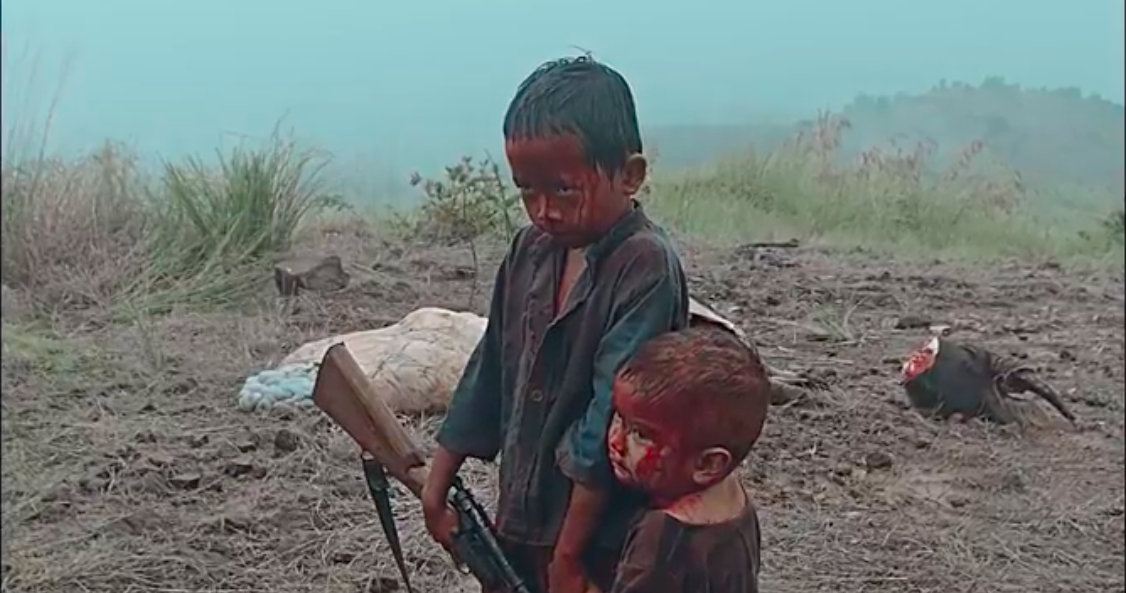Pista ng Pelikulang Pilipino (PPP)is an annual celebration in the Philippines, organized by the Film Development Council of the Philippines to champion the local film industry through the exclusive screening of Philippine films in all theaters in the country. With a highly successful inaugural run in 2017, PPP is back this year with a fresh slate of Philippine films aiming to cultivate and foster the industry.
Among the lineup for PPP 2018 is Balangiga: Howling Wilderness, one of the six films under the Special Features section of the festival gathering all Best Picture awardees in local independent film festivals from last year. The filmbagged three Best Picture awards from FAMAS Annual Awards and Gawad Urian in 2018 and QCinema International Film Festival in 2017. It also won Best Music from the same edition of Gawad Urian; Best Original Screenplay, Best Cinematography, Best Original Song, and Best Production Design from the same run of FAMAS; and Best Actor, Best Supporting Actor, and Best Director from the same edition of QCinema.
Balangiga does deserve the awards it has garnered. Set right after the Balangiga massacre—an incident during the Philippine-American War in which 48 Americans were killed in the town of the same name, and in retaliation, American soldiers went on a kill-and-burn spree and snatched three church bells as war trophies—the film follows two young boys and an old man who have managed to escape the said town and kill-and-burn spree, going on an arduous journey of survival. Through many things, Balangiga is able to execute that story beautifully.
Audiences may perceive it as dragging, with majority of its scenes showing scenery and mundane activity instead of thrilling action and story, but that’s what makes the film so special. It is honest in its portrayal of the daily activity of the people who are merely caught in a war—quiet, slow, anxious of what’s next for them. It clearly depicts the humanness of the wars we read in our history books, that they’re not merely effects of political differences or a person’s thirst for power, but also horrible causes of the suffering of those are neglected in all the squabble.
Creatively absurd but effective cinematography and musical scoring, topped with Khavn’s flippant brand of direction, make up for most of an initially dumbfounding and eventually moving narrative. The performance of what Khavn has called “non-actors”—Justine Samson as resourceful young Kulas and Pio Del Rio as his determined old grandfather—is what drives the realistic essence of the film forward.
Balangiga is a cinematic experience people should have. The film does not just offer a well-crafted storyline and tasteful imagery, but also—and most especially—an important take on a significant event that may change how a nation knows and tackles its history.
CAST
Pio Del Rio, Warren Tuaño, Justine Samson, Daniel Palisa
PRODUCTION
Director: Khavn
Screenplay: Jerry Gracio, Khavn, Achinette Villamor
Producers: Edong Canlas, Khavn, Achinette Villamor
Music: Khavn
Cinematographer: Albert Banzon
Editor: Carlo Francisco Manatad
Production Designers: Zeus Bascon, Timmy Harn, Marija Vicente
Prosthetics: Daniel Palisa
Sound: Stephen Lopez
Supervising Sound Editor: Mikko Quizon
Sound Editor: Kathrine Ariane Salinas
Still Photographer: Don Gordon Bell








